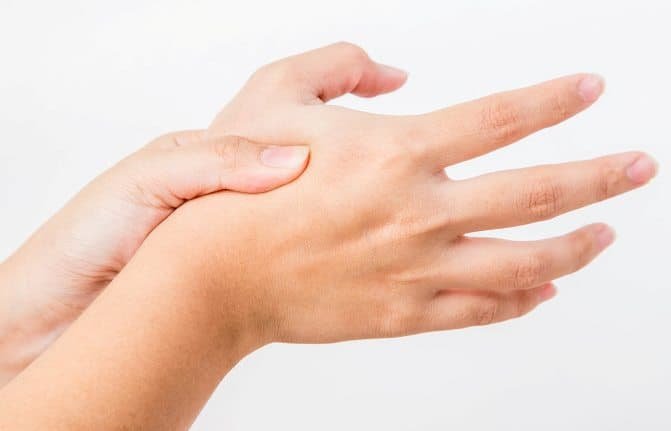Introduction
Carisoprodol is a commonly prescribed muscle relaxant that can provide relief for acute muscle pain and spasms. However, like many medications, it comes with the potential for side effects and dependence, which has led many to seek alternative treatments. In this blog post, we will explore several non-opioid alternatives to Carisoprodol that can provide effective muscle relief without the risks associated with opioids or muscle relaxants. These options include over-the-counter (OTC) medications, natural remedies, and therapeutic approaches that may be safer for long-term use.
The Drawbacks of Carisoprodol and Opioids
Carisoprodol and opioids are often prescribed for acute muscle pain, but they come with notable risks. While Carisoprodol is generally well-tolerated in the short term, prolonged use can lead to dependence, tolerance, and withdrawal symptoms. Similarly, opioids, though highly effective in relieving pain, carry a much higher risk of addiction, overdose, and long-term health issues.
Given these concerns, it’s important to explore non-opioid alternatives that can provide effective relief for muscle pain while reducing the risks associated with these medications.
Non-Opioid Alternatives for Muscle Relief
Nonsteroidal Anti-Inflammatory Drugs (NSAIDs)
Nonsteroidal anti-inflammatory drugs, or NSAIDs, are commonly used for pain relief and can be very effective for muscle pain, especially when inflammation is a contributing factor. These medications work by reducing inflammation, which can help relieve muscle soreness and stiffness.- Examples: Ibuprofen (Advil, Motrin), naproxen (Aleve), and aspirin.
- Benefits: NSAIDs can provide fast relief for muscle pain, and they are available both over-the-counter and in stronger prescription forms.
- Considerations: While NSAIDs are generally safe when used as directed, they can cause stomach irritation, ulcers, and kidney damage if used for extended periods. Always follow the dosage instructions carefully.
Topical Analgesics
Topical treatments can be an excellent option for localized muscle pain, as they deliver pain relief directly to the affected area. These creams, gels, or patches typically contain ingredients like menthol, capsaicin, or lidocaine that help alleviate pain and inflammation.- Examples: Biofreeze, Icy Hot, Bengay, lidocaine patches.
- Benefits: Topical treatments offer targeted relief with fewer systemic side effects compared to oral medications.
- Considerations: Some people may experience skin irritation or allergic reactions to topical treatments. Always patch-test a small area of skin before applying extensively.
Physical Therapy
Physical therapy is an effective non-pharmacological treatment for muscle pain, particularly in cases of muscle strains, sprains, and chronic muscle tension. A physical therapist can design a personalized program to strengthen muscles, improve flexibility, and reduce muscle spasms.- Benefits: Physical therapy addresses the root causes of muscle pain by improving posture, flexibility, and muscle strength. It also helps reduce the risk of future injuries.
- Considerations: It may take time and commitment, but physical therapy is a long-term solution for muscle relief that reduces the need for medications.
Magnesium Supplements
Magnesium plays a crucial role in muscle function and relaxation. A deficiency in magnesium can lead to muscle cramps, spasms, and tightness. Taking magnesium supplements or increasing magnesium-rich foods in your diet may help reduce muscle pain.- Examples: Magnesium citrate, magnesium glycinate, or magnesium-rich foods such as spinach, almonds, and bananas.
- Benefits: Magnesium is a natural, safe supplement that helps muscles relax and can prevent cramping and spasms.
- Considerations: Excessive magnesium intake can cause diarrhea or stomach upset. Consult your doctor before starting supplements, especially if you have kidney problems.
Turmeric and Curcumin
Turmeric, and specifically its active compound curcumin, has powerful anti-inflammatory properties that can help reduce muscle pain and swelling. It has been used for centuries in traditional medicine to treat various inflammatory conditions.- Examples: Turmeric supplements or adding turmeric to your diet.
- Benefits: Curcumin has been shown in studies to help reduce pain and inflammation in conditions like arthritis and muscle injuries.
- Considerations: Turmeric can interact with certain medications, including blood thinners, so always consult your doctor before using it as a supplement.
Acetaminophen (Tylenol)
Acetaminophen is another over-the-counter pain reliever that is often used for muscle pain. While it doesn’t have the anti-inflammatory effects of NSAIDs, acetaminophen can still help reduce pain and provide relief from sore muscles.- Examples: Tylenol, Excedrin.
- Benefits: Acetaminophen is gentle on the stomach and doesn’t carry the same gastrointestinal risks as NSAIDs.
- Considerations: High doses or prolonged use of acetaminophen can cause liver damage. Be sure to follow the recommended dosage and avoid mixing with alcohol.
Heat and Cold Therapy
Both heat and cold therapy can provide effective relief for muscle pain. Cold therapy (such as ice packs) helps reduce inflammation and numb pain, while heat therapy (such as heating pads) promotes blood flow and relaxes tense muscles.- Benefits: Both therapies are easy to use and can provide quick relief for localized muscle pain. Heat therapy is particularly beneficial for chronic muscle tension, while cold therapy is ideal for acute injuries.
- Considerations: Be cautious not to apply heat or cold for too long to avoid skin damage. Use a cloth or towel as a barrier to prevent burns or frostbite.
Massage Therapy
Therapeutic massage can help release tight muscles, improve circulation, and alleviate pain. Whether it’s through a professional massage or self-massage techniques, this approach can be highly effective for muscle relief.- Benefits: Massage therapy helps release built-up tension in the muscles and promotes relaxation. It can also improve blood flow to the affected areas, speeding up recovery.
- Considerations: It’s important to work with a licensed massage therapist who understands muscle pain and injury. If self-massaging, be mindful not to apply too much pressure, as it could cause more harm.
Conclusion
While Carisoprodol is effective for relieving muscle pain and spasms, there are numerous non-opioid alternatives that can offer safer, long-term relief. From over-the-counter medications like NSAIDs and acetaminophen to natural remedies such as turmeric and magnesium, there are a variety of options available for managing muscle pain. In addition, therapies like physical therapy, massage, and heat/cold treatments can complement these solutions for holistic pain management.
If you’re seeking relief from muscle pain but want to avoid the risks associated with Carisoprodol or opioids, consider these non-opioid alternatives. As always, consult with your healthcare provider to determine the best approach for your specific needs and condition.







































































































































































































































































































































































































































































































































































































































































































































































































































































































































































































































